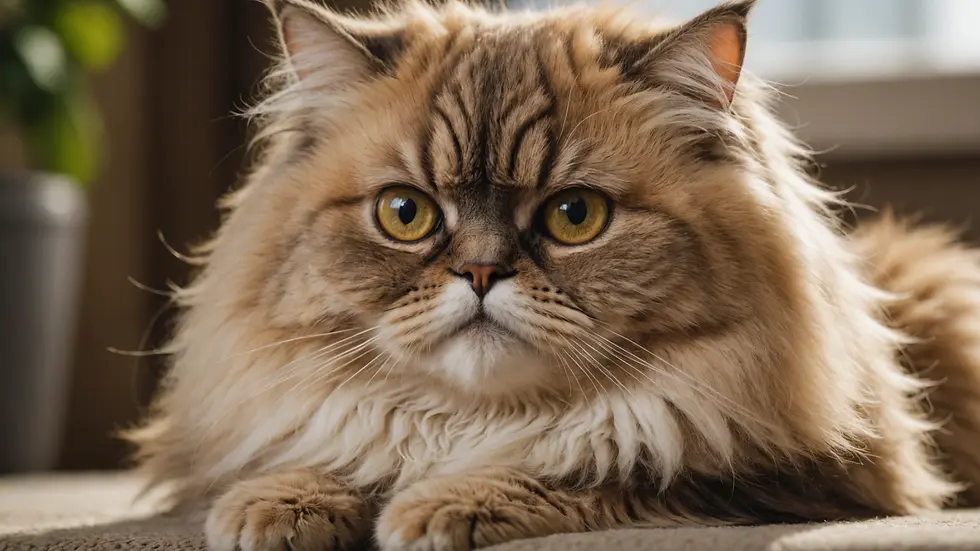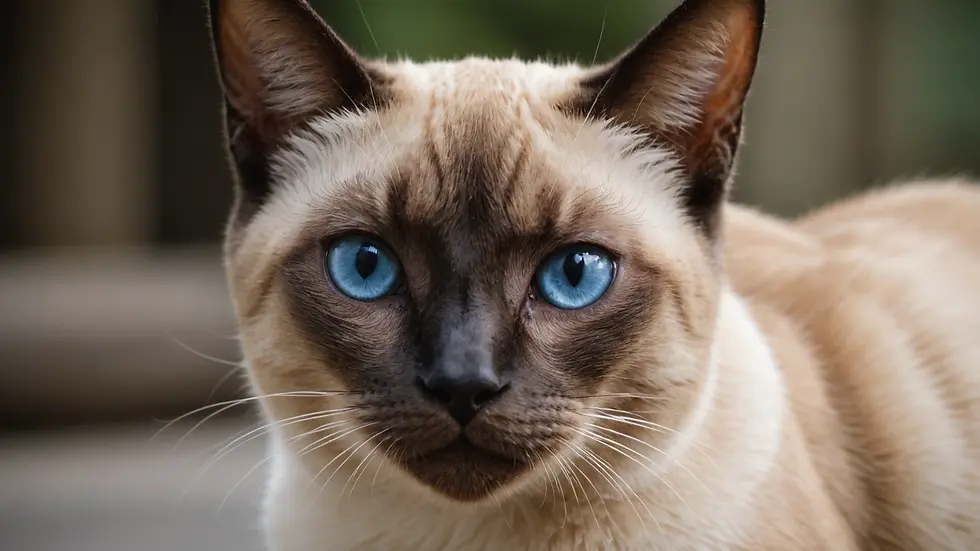Exploring the Diverse Origins: The Evolution of Various Cat Breeds
- Jyotiraj Borah
- Feb 5
- 5 min read
Cats have captivated humans for thousands of years. From the majestic Maine Coons to the enchanting Siamese, each breed has a rich history shaped by natural evolution and human influence. Knowing where they come from can elevate our appreciation for these beloved pets.
In this blog post, we will take a closer look at the fascinating journey of our feline friends. We will explore their ancestry, distinctive physical and behavioral traits, and how they have transformed into the cherished companions we know today.
The Origins of Domestic Cats
The story of domestic cats begins around 10,000 years ago in the Near East. As humans transitioned from nomadic lifestyles to settled farming communities, they developed grain storage systems that attracted rodents. Wild cats, keen hunters, naturally began to live nearby, hunting these pests. This partnership allowed cats to enjoy a consistent food supply while helping humans control vermin.
The bond formed over time was mutually beneficial. A study found that as agriculture expanded in places like ancient Mesopotamia, cat populations increased by 50% in proximity to human settlements. Over generations, these wild cats adapted to coexistence with humans, leading us to the domesticated cats we recognize today.
The Role of Natural Selection
Natural selection greatly influenced the development of various cat breeds. Early domestic cats exhibited diverse traits. Those with friendly temperaments and adaptable behaviors thrived and reproduced. Research indicates that cats with sociable traits had a 40% higher chance of remaining in households.
Different breeds emerged, characterized by specific physical traits and temperaments. While some were intentionally developed by humans, others arose naturally. For instance, the Norwegian Forest Cat features thick fur and large paws to adapt to snowy environments, showcasing how natural selection shaped breeds based on their habitats.
Early Breed Development
Different cultures throughout history favored unique cat traits. In ancient Egypt, cats were revered for their hunting skills. The Egyptian Mau, known for its distinctive spotted coat, symbolizes the important role cats played in that civilization. In fact, evidence suggests that they derived their name from the Egyptian word for cat, "mau."
In medieval Europe, cats again proved valuable. They controlled rodent populations on farms, becoming integral to household life. With the expansion of trade routes, cats like the Ragdoll became more widespread as breeders exchanged cats from different regions. By the 19th century, the first formal cat shows began in England, leading to more organized breeding and the recognition of modern breeds.
The Impact of Human Intervention
As interest in purebred cats grew in the late 1800s, breeders intentionally shaped specific traits. Cat shows promoted cats that adhered to defined standards of physical appearance and temperament. This increased diversity among recognized breeds. For example, the Persian cat gained popularity for its long fur and flat face, leading to a surge in breeding practices tailored to enhance these features.
Statistics from major cat fancier organizations show that the number of recognized breeds tripled from the late 1800s to the early 2000s, with around 70 distinct breeds acknowledged globally today. This growth reflects both the demand for specific looks and the importance of preserving certain traits across generations.
Recognizing Regional Breeds
Various geographic regions also influenced cat breed evolution. The Russian Blue, for instance, originated in Russia and is admired for its silvery-blue fur and striking green eyes. According to folklore, these cats were associated with the Russian nobility, enhancing their desirability.
Similarly, the Scottish Fold, with its unique folded ears, gained popularity thanks to a spontaneous genetic mutation. Breeders stood captivated by its distinctive appearance, leading to increased interest and development. Each region adds its specific flavor to the diverse world of cat breeds, illustrating the crucial role of environmental and cultural factors.
Unique Traits of Popular Breeds
Persian Cats
Persians are one of the most recognized cat breeds, featuring long, luxurious coats and round faces. These cats require regular grooming—about 2-3 times a week—to maintain their beautiful fur. Typically gentle and affectionate, they make excellent indoor companions. Studies have shown that over 60% of cat owners who own Persian cats report them as being affectionate and calm.

Siamese Cats
Siamese cats stand out not only for their striking color points but also their playful personalities. Originating in Thailand, they are known for being interactive and vocal, often following their owners around the house. Research suggests that nearly 75% of Siamese owners appreciate their cat's social and playful nature, often engaging in interactive games.

Maine Coon Cats
Maine Coons are one of the largest domesticated cat breeds, known for their gentle disposition and tufted ears. Originating in North America during the 19th century, they were cherished for their hunting skills and friendly nature. These "gentle giants" can weigh up to 25 pounds, making them a favorite for families looking for a loyal and robust companion.
The Influence of Global Cat Shows
As cat shows gained popularity in the 19th and 20th centuries, they solidified what defines cat breeds today. Breeders worked diligently to refine traits, with judges assessing cats based on appearance, structure, and temperament. These events not only boosted the popularity of breeds but also encouraged better breeding practices.
Statistics indicate that over 40% of cats entered in shows receive accolades, reflecting the competitive landscape and the dedication of breeders committed to quality.
Health Considerations in Breeding
While breeding for specific traits can enhance beauty and variety, it can also lead to health issues. Certain breeds, such as Persians and Siamese, are predisposed to genetic disorders. For example, 30% of Persians suffer from respiratory issues related to their short, flat faces.
To address these risks, prospective cat owners should adopt from reputable breeders who focus on health alongside aesthetic qualities. Ensuring responsible breeding can lead to healthier cats and more fulfilling relationships.
The Modern Cat Ownership Experience
Today, cat ownership encompasses a diverse array of feline breeds. With increasing knowledge of genetics and behavior, breeders often aim for balanced traits that enhance the cats' well-being while retaining each breed's unique qualities.
For potential cat owners, it is essential to consider temperament and health needs along with appearance. Each breed comes with specific quirks, so ensuring compatibility with your lifestyle can foster a meaningful bond.
The Future of Cat Breeds
The evolution of cat breeds will continue into the future. Advances in genetic research offer potential for greater diversity and improved health among our feline companions. New breeds may emerge, while existing breeds may undergo further enhancements to address the needs and preferences of modern cat owners.
As our appreciation for cats grows, so too does the fascination with their ever-evolving histories.
Reflecting on Feline Heritage
The journey of cat breeds highlights their adaptability, resilience, and deep-rooted connection to humans. From ancient wild hunters to cherished family members, cats have transformed significantly due to natural selection and human intervention.
Understanding the unique traits, histories, and challenges of various breeds enriches our bond with these remarkable animals. By learning about and honoring the heritage of our feline friends, we foster deeper connections and promote responsible ownership. Each breed contributes to the vibrant tapestry of cats that share our homes and enrich our lives.




Comments